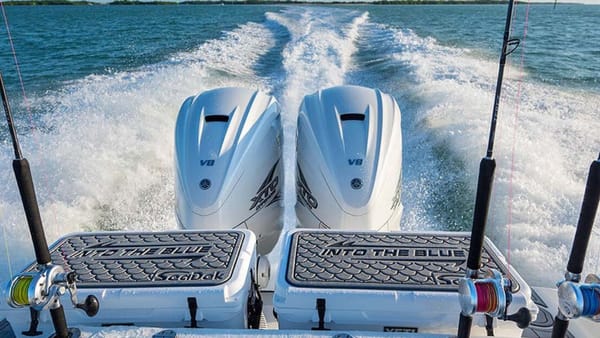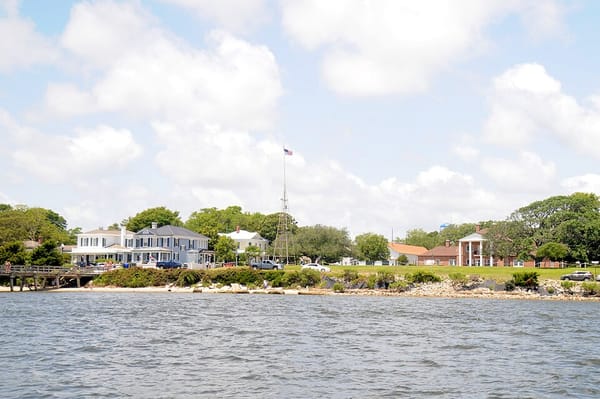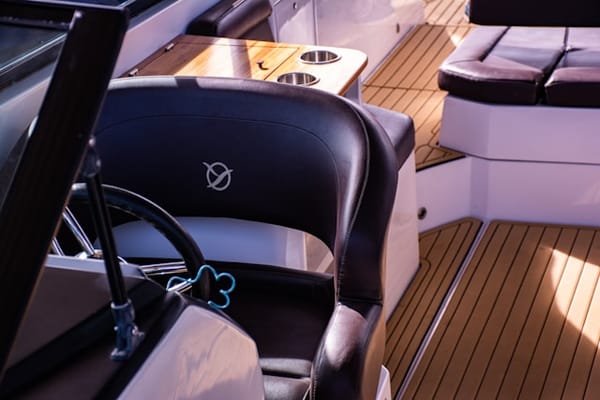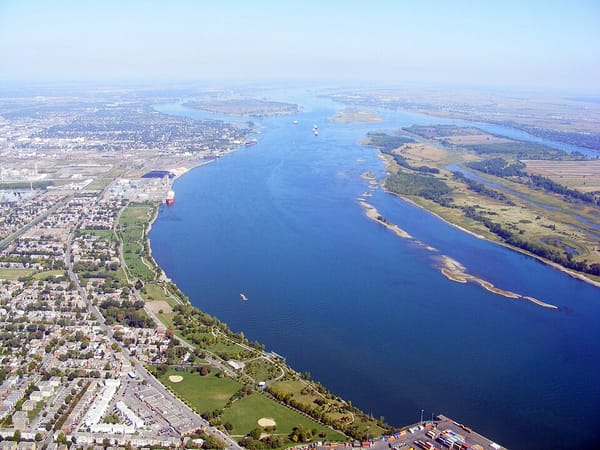How to Prepare Your Boat For A Hurricane

Warm water, warm air and light upper winds … Sounds like the perfect day out on the boat, doesn’t it? Unfortunately, it’s also the perfect recipe for a hurricane. Between the storm surge, wind, rainfall and even tornados, Mother Nature can create a lot of havoc in a short amount of time.
Hurricane season is officially June 1 through November 30, but mid-August to late October is when we see the most action. If your summer boating season takes place in the Gulf of Mexico, the Atlantic Ocean, the Caribbean or even the Chesapeake Bay, knowing how to prepare for a hurricane needs to be at the top of your boating checklist.
While we typically hear about hurricanes in the southern regions of Florida, Texas and North Carolina, mid-Atlantic states like Maryland, Virginia and Delaware can see extreme flooding and high winds from hurricanes, so it’s good to stay in the know as far as safe anchoring of your boat whether it’s at a fixed dock, a floating dock or a private boat dock rental on a canal.
When it comes to hurricane prep, think “high-and-dry.” The best plan is to get your boat out of the water and onto high land or into an enclosed boatel. Of course, that’s not always possible, either because of time, cost or boat size. If that’s the case, you’ll need to know how to properly secure your boat to take on the storm in the water.
If you are able to store your boat on land, make sure it’s tied down tightly. Unlike in the water, when the boat is on land, you want it tied up as tight as possible. Traditional jack stands may not be enough on their own, as high winds can knock the boat around and possibly tip it over. An anchor system like eyes set into concrete - with lines connected to the boat - is a great method to keep the boat secure. It’s recommended that you chain the jack stands together to prevent spreading during high winds.
For boats on a trailer on land, let the air out of the tires and put blocks in front of the tires to prevent rolling around. Secure the trailer to a sturdy tree or use multiple anchors.
How to Prepare a Boat for a Hurricane
The first order of business is to remove sails, Bimini tops, cushions, canvas, deck chairs and other gear that could get damaged or become a potential projectile. You’ll also want to remove electronic devices such as GPS, chartplotters, fish finders and VHS radios in the event that rain gets inside the vessel.
See out storm shelter in a “hurricane hole,” a small cove, canal or marina that has some land around it and doesn’t see as much storm surge as a wide-open expanse of water. If your boat is currently in an open water marina or in an unprotected boat slip, consider temporary dockage at a private boat dock rental.
How to Tie-Up in the Middle of a Canal
One method some boaters use is to tie-up the boat in the middle of a narrow canal. This is an ideal hurricane plan as it keeps the boat from banging against the sides of the boat dock or concrete seawall. To do this, position the boat in the middle of the canal with the bow facing into the wind. It’s a good idea to use two anchors for more staying power.
Use multiple long dock lines (at least 10 times the depth of the water) to connect the boat to both sides of the canal. Longer lines let the boat rise and fall with the water while staying away from pilings, docks and concrete walls. You want it to be secure, but you also want some give and flex (as opposed to land storage where you want it tied down tight).
It’s advised to use polyester and nylon lines together. The nylon line can absorb the greatest force and then the longer polyester line (which is more resistant to chafing) brings it under control. Don’t use more than two lines on one cleat. Using two lines gives some peace of mind that if one line breaks, there’s a second one that can take over.
Tying up at a Fixed Dock
If you’re tying up to pilings at a marina or private boat slip rental, make sure that the pilings are in good condition and tall enough that the water doesn’t cover them up. Storm surge can be at least 10 feet higher than normal high tide. Pilings that are six or eight feet tall just aren’t going to cut it. Once the water reaches the top, the dock becomes like a raft and is likely to take everything attached to it into the storm.
Boat Lift vs Water
It might seem like having your boat on a lift would be the best way to go. After all, it’s out of the water, right? The problem with that is that high winds can blow a boat off a lift or davit. This can cause much more damage (to the boat, the boat dock and other property) than if it had been in the water. It’s never advised to use this method.
Hurricane Boat Prep Checklist
- Make sure your boat insurance is up to date before hurricane season
- Perform seasonal maintenance to make sure dock lines aren’t old and frayed
- Remove sails, canvas, Bimini tops and other things that could get torn off
- Seal off doors, windows and hatches to prevent leaking
- Turn off the fuel lines
- Cover vents to engine rooms
- Plug the exhaust pipe to prevent flooding in the motor
- Use multiple long dock lines and anchors
- Use large nylon lines with two or three strands
- Cover lines with chafing gear to prevent breakage from rubbing back and forth
- Anchor with the bow facing into the wind
- Check storm tracking at the National Hurricane Center or BoatUS Hurricane Tracking
- Do NOT attempt to “ride out” the storm aboard the boat
Hopefully this guide has given you some helpful tips and advice on preparing your boat for a hurricane or severe storm. Taking just a few simple steps can keep your boat safe while you stay worry free.



